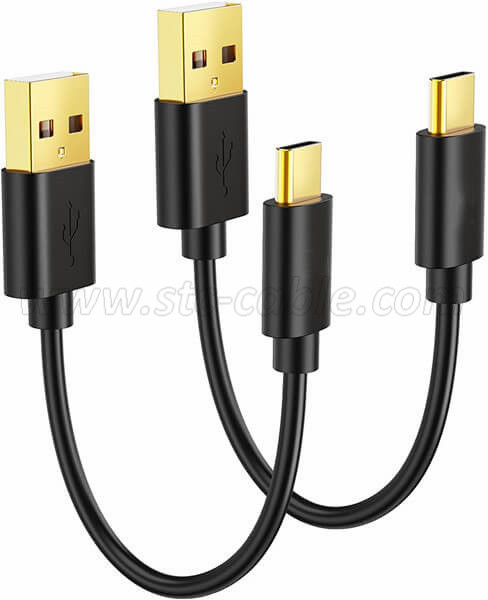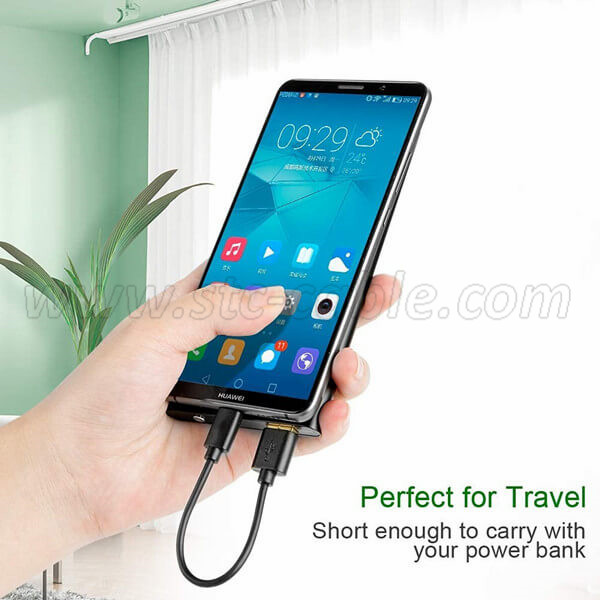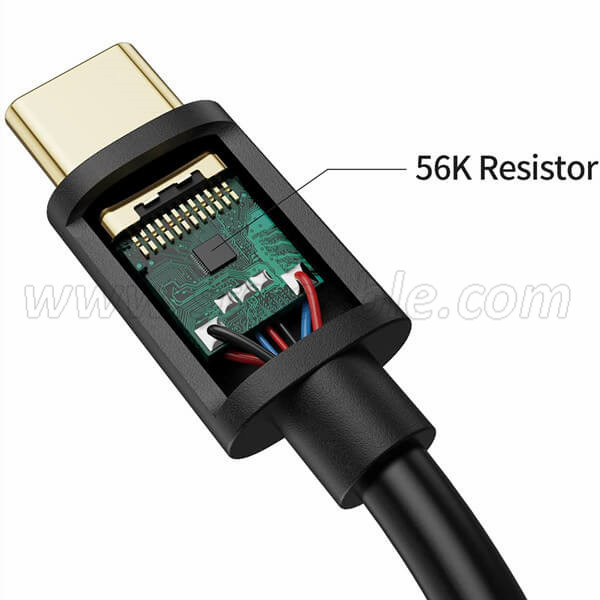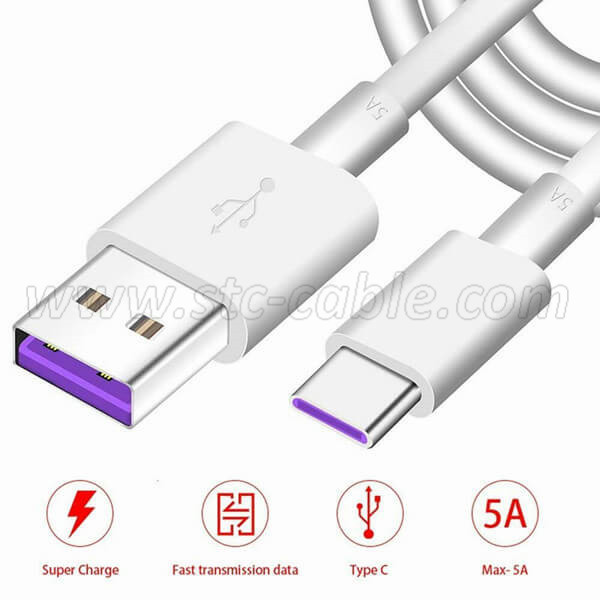It seems that few consumer electronics features generate as much grudge as a phone charger socket. For those of us with Android phones, the world has been slowly transitioning from micro-USB to USB-C over the past few years, and iPhone users look to their Lightning connector as the ultimate in connectivity. Bringing together a diverse group of phone users could turn into a full-blown feud, as micro-USB users complain that no one has a convenient charging cable anymore, USB-C users become complacent, and Apple users do what they already do Things always pretend that Steve Jobs invented USB. The European Union threw a burning torch for the incendiary combination, proposing to make USB-C mandatory on all phones sold in its 27 member states in a bid to drastically reduce the amount of e-waste generated.
Aside from the small annoyance of having to carry an extra micro-USB cable for the odd device, we can't find any reason not to applaud the move, as USB-C is a connector born out of the decades of USB development and Nothing brings not only a reversible plug, but an enhanced power delivery standard that enables fast charging no matter whose USB-PD charger you're using. Mandating the use of USB-C will put an end to needlessly overpriced proprietary cables and finally bring unity to a broken world.
Readers with fresh memories will recall that the EU has done this with USB charging before, mainly because it took the form of a memorandum of understanding with the manufacturer. But most Android phone makers signed up. This spreads to other devices.
Apple got rid of micro-USB by including an adapter cable, leaving the proprietary jack on the phone itself. This time around, the EU will likely make connectors mandatory, removing any wiggle room for diehard manufacturers.
USB-C ports are sturdy, convenient, and feature-rich, so where might the hurdles be in this plan? Imagine they made this move in 1998 instead of 2021.There were many chargers on the market at the time, but probably the most common was the Nokia 5V Micro Barrel Jack. It makes sense to use the Nokia connector, so all phones produced for the EU market over the past few decades will have it. By now, the need for an improved connector that takes up less space and has some way of transferring data will be deafening, because in an era when the Nokia 5100 is a coveted object, so many unimaginable changes have taken place in mobile phones.
So today, a USB-C connector has all the features we can think of for a 2020s mobile device and will still be useful for years to come, right? But what about the 2030s or 2040s?Will a 5 GB data rate or a 100 W power limit be enough when the Galaxy Fold or iPhone 13 looks as quaint as today's Snake-equipped Nokia? Any mandatory standard must include revisions in it to reflect technological progress, or we risk going backwards. Or push the next standard.

So we welcome the prospect of a truly unified charging cable for all our devices. We think USB-C is a great tool for the job, and we hope it doesn't simply create a standardized EU version and leave the rest of the world still debating which cable is best. We just want the EU to act wisely with regards to the life cycle they choose.
Kind of a joke, but maybe there's a clean separation between power and data, the latter being optical and the former being copper. Our optical technology is mature enough to achieve high speeds and provide electrical isolation and small size. This leaves plenty of room for power delivery while maintaining safety.
It's still immature because you can't buy a Power Over Fiber product, but it doesn't cost an arm and a leg. Using a POF receiver solar cell is also much less efficient, which means the charging power won't be as high due to the power consumption of the phone. I am more than happy to recommend cheap POF products with electrical output >=1W.

Just drill a hole in the tip of the 3.5mm headphone jack, put the fiber in it, and you have a connector that can handle most use cases I can imagine. From using traditional headphones, to delivering lots of power (3.5mm jacks are even used to power soldering iron tips) and lots of data (you can have individual wavelengths in a single fiber, each carrying hundreds of gigabits of bandwidth separate data stream).One wavelength (color) is for HDMI, another for Ethernet, another for external hard drives, and so on. This is all possible with a revised 3.5mm jack. All you need is fiber optics and some power delivery handshaking (you start with 1V for the mic via the TRRS jack and negotiate higher voltages as needed)

In the future we have wireless power and wireless data. Well, we've got them now...let's omit the connectors altogether and focus on high-power wireless power.
With USB4 supporting up to 40Gb/s data (one-way) and 240W of power, it will take a while for phones and other small devices to surpass USB-C *today*.Keep in mind that it has grown from 5Gb/s and 4.5W to what it is today, and future improvements are promising. If it does become outdated, they can change the legislation. They've moved from micro-USB-B connectors, so they have a history of updating things.
The value of having a standard is not its long-term stability - even 5 years is enough to show a huge benefit - but the unifying connection over that time. Once a standard for micro-B comes out, it's nice to see all the crazy connector monopolies collapse into *one* best standard. There may be debate about whether micro-B is the right choice, but the benefits of having *one* standard overshadow that.
Now is the time to move on. USB-C is well-documented at this point, and there's plenty of room for devices to expand their capabilities (and not just power them).
Can you imagine someone designing a phone and thinking the 240W USB cable is the bottleneck? I'm pretty sure this is a great way to get a Li-Po battery on fire.;)
It will be interesting to see how this review ages. Twenty years ago, if you had a phone it was charged with a 1-2W charger, now even low-end smartphones can charge 10W or more.
What battery technology developments will emerge over the next 20 years, and how will device power and charging requirements evolve?
Phones currently on the market charge at 65 watts, and it's debatable whether that's crazy. However, some drop to a more realistic 25 watts, which is an order of magnitude higher than what cellphones used in the early 2000s.In the next 10 to 20 years, who knows, 240 W may be seen as "a typical fast charger, but a really fast charger that's more than twice as fast!"
No phone is complete without a spot weld adapter. You must carry enough energy to start the car, and it must be charged immediately.
However, Micro USB has never been a legally enforceable standard that all devices must comply with. It's just the market itself moving towards the de facto standard.
From a marketing standpoint, it's probably all good that USB-C will take over. But the EU has no reason to force its monopoly. Even the EU has been slow to adapt to the times.
It's true that micro-USB was never legally enforced, but the European Union pushed phone makers to adopt a single connector in 2009.
Hmm... it's written in the Ha-D article that sounds like Apple is proposing a switch to USB-C, when it's actually EU support and Apple isn't happy with it.
Did you read the same article? I don't smell Apple's changes to mandate USB-C on devices.
With USB-C, have we reached the peak of the connector? The 100W limit can be raised up to a point, just increase the voltage - 20V today, 48V is usually the maximum safe voltage for any reason (Po-E).You need to maintain adequate insulation when increasing the voltage, but 48V is hardly high voltage territory. Keep specifying the maximum 5A of the desired cable diameter and you can get 240W.This is the power ordering for mobile devices. If a device draws 240W then I probably don't want that.
The data side of things today is 10 Gbit/s with some funky modulation, who knows what will happen in the future. Likewise, for mobile devices, what can sustain this kind of bandwidth? Maybe in the future flash memory will be faster to read/write, but USB-C may catch up.4k displays are supported, which is likely to run faster on the same physical connector.
The 48 volt limit is because the lower limit for shock is about 50 volts. Anything lower and voltage is too low to overcome the natural resistance in the body. Once the voltage goes above 50 volts, there's a whole bunch of different regulations to deal with because it might shock someone right now.
From what I understand, about 50 volts is high voltage and below 50 volts is low voltage, it's just because of the body's reaction.
The old SELV standard demarcated at 60V.The PoE (PSE) power supply outputs 54 to 57V to help overcome wire resistance and provide usable power up to 100m away. The old IEC/UL 60950-1 and the replacement IEC 62368-1 are hazard-based safety standards. Its base ES1 is 60VDC.Lots of things like PoE, 2-way radios, and cellular base stations run at 54V (the float voltage of a 48V battery).You can touch 54V with dry hands and not feel anything. You can lick the 9V battery terminals with your tongue and it may hurt. "High" and "Low" are subjective. North American electrical code writers confuse the issue by choosing various voltages as "safe" thresholds.
The problem is not the risk of electric shock, but the risk of buckling increases dramatically above 20V.
Adding arc detection on top would be fairly easy considering how much "smart" it would take to negotiate said 20V...
The 5A limit is ultimately imposed by the temperature rise of the USB-C connector contacts. Cable size is a secondary consideration.
It's as standard as Apple's Ipod connector moves to Lightning (ignoring USB-C on some iPads).2 different connectors for over 20 years is actually a credit to Apple. I think Nokia is similar, mid 90's for big barrels, mid 2000's for smaller barrels. Then, the brief heyday of the late N-series moved to micro-USB.
Yes, our hair dryers, waffle irons and impact wrenches require wireless charging. Our routers and cable modems require wireless data transfer. Get rid of those pci-e edge connectors and make them wireless too. No connectors, no exceptions.
The EU is more likely to make wireless charging illegal than to enforce it.
To some extent, wireless charging is illegal in some niche implementations. And in most implementations as a whole in a legal grey area. But I've written a lot about why this happens: https://hackaday.com/2021/06/20/19-coils-make-charging-wireless/#comment-6358162
I do this now, my phone syncs with my next cloud server over my wi-fi while it sits on a wireless charger at night,
1. It stifles innovation. There's really nothing to be fair about since USB-C. It's mostly just 6 differential pairs and a set of power pins and some "special" pins for other stuff. But the future may not be enough in many ways.
2. It overcomplicates many applications. Implementing USB power delivery in a variety of products that primarily only need power is not a great nor fun standard. It's here that this proposal is actually the worst... From what I've read, even the humble 9-19 v barrel jack is in a legal grey area, although it's ubiquitous and for many applications Said it was almost perfect.
3. It effectively gives a non-EU organization a monopoly. Thankfully, an organization that's no longer "for-profit", but it's still not a free-to-use standard...a long list of apps involves licensing costs. Thankfully, though, there are some exceptions for quite a few applications.
But some apps will now be forced to pay licensing fees for the standards pushed to them. But again, the EU cannot force the USB Implementers Forum to make changes and "open up" the standards and licensing structures there. First, because it's not an EU-based organization, and second, it's rather obtuse to do so even for a local organization.
4. It is questionable whether the USB-C connector has the necessary specs to do what has been pushed onto it. For example, with a power supply allowing up to 48 volts at 5 amps, is there enough pin spacing to ensure safe fire-free operation? Is the contact resistance enough to handle 5 amps?
Then there's the arching issue that currently occurs when disconnecting USB-C cables that supply more than 12 V. Implementing a fix for accidental unplugging is a seemingly intractable feature.(A slightly shorter data pin that detects disconnection before the disconnect actually occurs might be a solution. But no such pin currently exists in the spec.)
in the end. It would be much better to let the market take care of itself in this sector. After all, 15 years ago, every phone maker used its own connector, and some even had multiple different connectors for different devices. But today, as far as phones go, it's mostly USB-C, Micro USB, and the Apple Lightning port. Laptops have made a big move to USB-C (including Apple), and some power-hungry laptops still have their own barrel plugs, but these more power-hungry devices may be exempt from the proposed directive anyway.
What about other devices that don't consume a lot of power? Like network switches/routers, desktop computers, monitors, etc?
The industrial and medical fields can be quite different, as reliability is usually a big issue there, not to mention that the environment itself can be quite harsh for electronics, but this also applies to outdoor electronics in the consumer space.
Your arguments also apply to railroad track spacing, power connectors, car cigarette lighters, tire inflators, coin sizes, keyboard spacing, pedal positions, guitar tuning, and more. We pick something and use it. The U in USB stands for Universal, we all understand that.
Yes, USB power is an issue if you want to arc welding or make frozen margaritas, but for phones and laptops it works great.
For example, railway gauges should be wider. The same goes for the loading gauge.(Trains are less crowded if they're a meter wider than standard. If the tracks are wider too, they won't derail as easily, because if the car has a wider wheelbase, it's harder to roll over.)
The power connector could also be better. However, the 250 V and 16 A capability of the F-type connector is quite good.(Most places that use it, though, run on 230 volts, and many outlets are only rated for 10 amps.) Type A/B outlets seem like a death trap by comparison... Type G seems bulky, while Europlug should be illegal….(I don't know how long its pins stuck in the socket, leaving a pair of exposed wires sticking out, the A/B type is much safer.)

Send your message to us:
Post time: May-10-2022